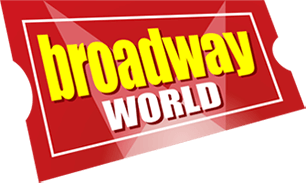Review: Guy Mintus Thrills in RHAPSODY IN BLUE & WHITE at Stephen Wise Free Synagogue
Guy Mintus Presents American and Israeli Jazz
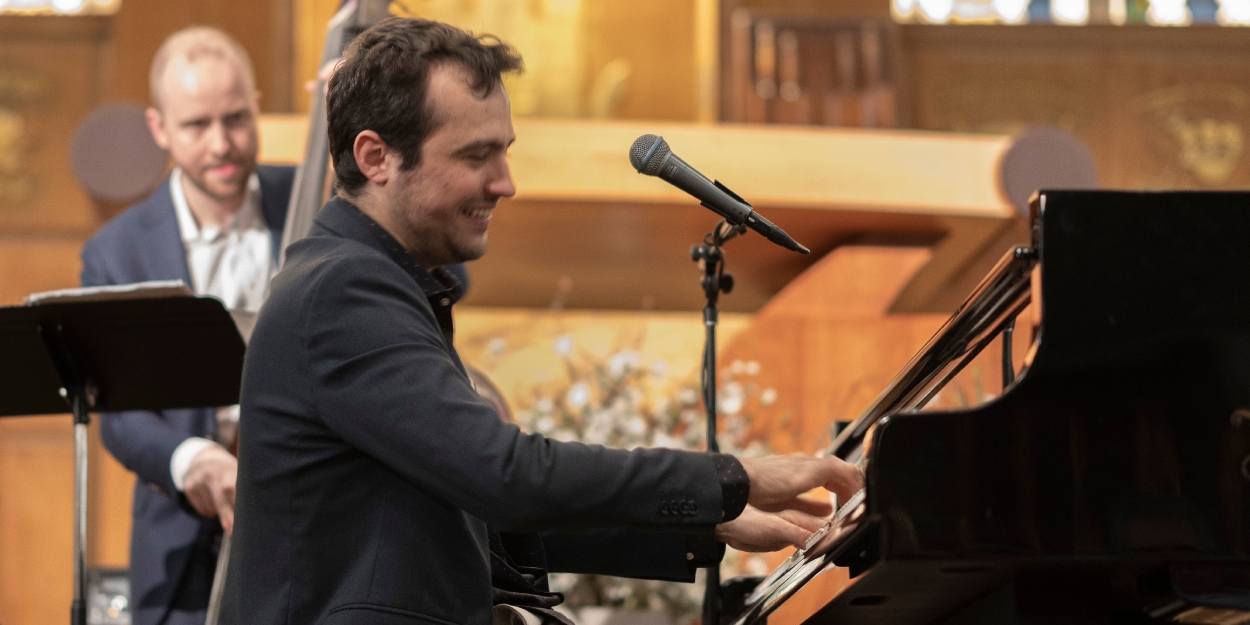
Jazz is America’s great artistic innovation. Its origins are particularly American. It is available to anyone regardless of socioeconomic class, race, gender, creed, or background. It is exceedingly democratic in that way. It was born in the American South, out of oppression and pain, and became a music that transcends that. It has, from the beginning, been about fusing disparate cultures into one sound. Spirituals, folk melodies, klezmer, military marches, Italian art songs, and classical structure have all been folded into the sound of jazz. Its improvisatory nature makes it ephemeral in that you can never hear the same tune twice. Unlike classical music, it does not exist in the realm of perfection. It is a reflection of the alchemy between a specific audience and a specific artist at a specific moment.
For over 100 years that has been the secret sauce of America’s contribution to world culture. The idea that anything is possible inside a jazz tune is why it has endured and evolved as it has. Jazz is also one of our greatest exports as a country. We sent jazz into the four corners of the earth and the echoes that come back have an accent all their own. It is still jazz but with a subtle shift in flavor. In this way, jazz continues to grow in appeal and proliferation. In short, America’s art form has gone global.
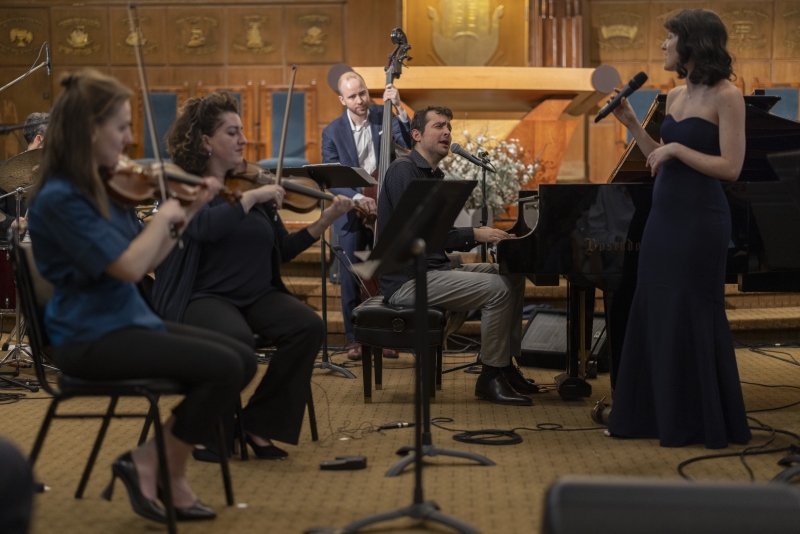
That was on full display when Israeli artist Guy Mintus brought his trio to the Stephen Wise Free Synagogue for a concert of Israeli and American selections that selected the Jewish influence that has been a part of jazz since its very beginnings. The Guy Mintus trio consists of Mr. Mintus on piano, Luke Sellick on bass, and David Sirkis on drums. All three men are exceptional musicians, but Mintus is the center of attention. He performs with the confident swagger of a rock star. His love of sharing his art is irresistibly infectious and comes with an always implied “Wait until you hear this.” Such confidence is entirely justified. His inventions are clever, heartfelt, and 100% his own.
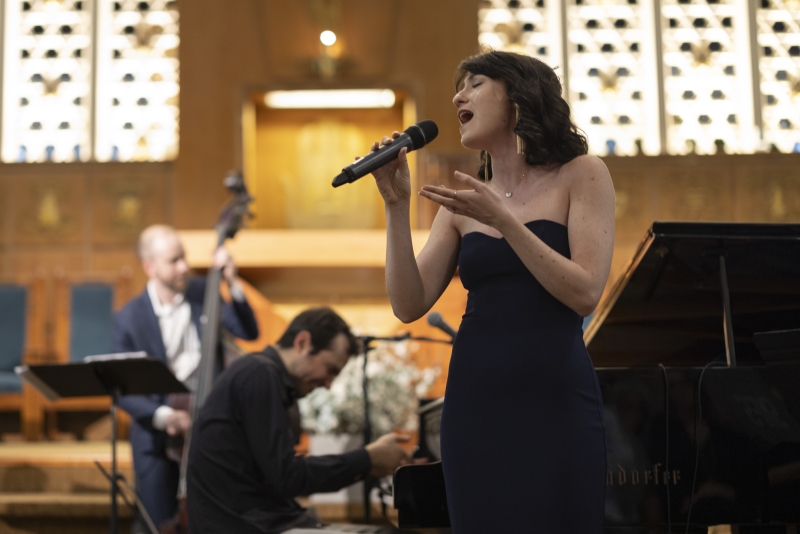
His program, entitled RHAPSODY IN BLUE AND WHITE, was composed of tunes by American and Israeli composers who were outspoken about Jewish cultural issues. It featured tunes by Arik Einstein, and Naomi Schemer and opened with Zohar Argov’s “The Purple Dress.” Highlights also included an acrobatic version of Bock & Harnick’s “To Life,” and a low-down blues version of “It Ain’t Necessarily So,” the Gershwin tune from Porgy & Bess. This tune also featured Tim Ries, at one time a saxophonist for The Rolling Stones. Another guest star was singer Meital Waldmann who gave an outstanding performance of Leonard Bernstein’s “Somewhere.” Her thoughtful, internal style was a good contrast to the more extroverted Mintus. Guy Mintus also performed his own composition “Dalp” which he explained is a word he made up to describe a moment when one finds oneself at a fork in the road. It is a light-hearted piece despite being musically complex, with Mintus also playing the inner strings of the piano as well as the outer keys. The piece's tone was similar to the French New Wave Jazz artists of the late 60s and early 70s.
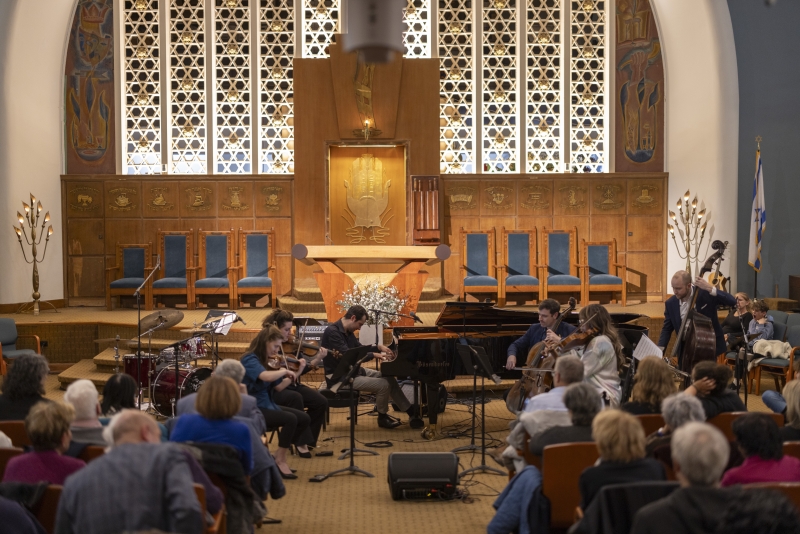
But the highlight is the evening came when Mintus was joined by a string quintet to perform his own arrangement of Gershwin’s "Rhapsody in Blue." The lighter texture of the strings brought a vulnerable quality to Gershwin’s intricate structure. Guy Mintus added many of his own improvisations to the cadenza sections of the Rhapsody. This seemed thoroughly in keeping with Gershwin’s conception of a jazz concerto. It is a piece designed to display the virtuosity of the pianist. Mintus did not disappoint. His exuberance was right in line with that of the piece which has become almost a metaphor for the energy and vigor of New York City. Guy Mintus is a vital artist to keep an eye on.
For more information on Guy Mintus visit his website, guymintusmusic.com, or follow him @guymintus on Instagram.
For more programs at the Stephen Wise Free Synagogue go to swfs.org
Header photo by Yana Lande
Reader Reviews

Videos
